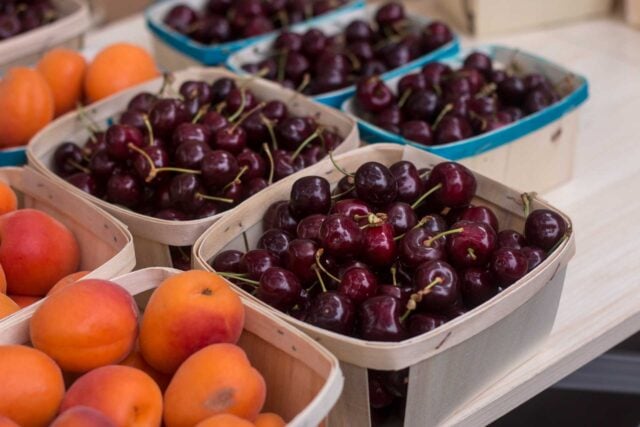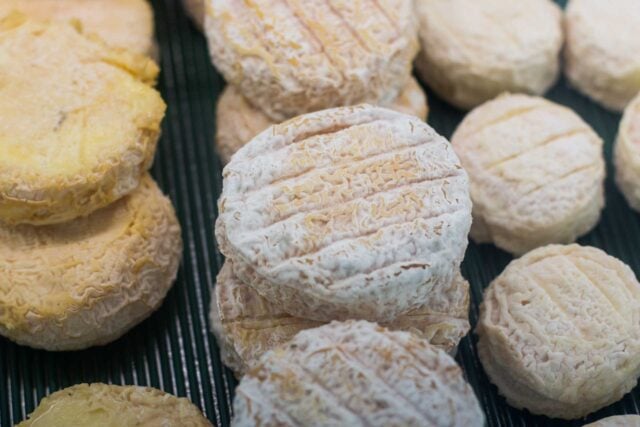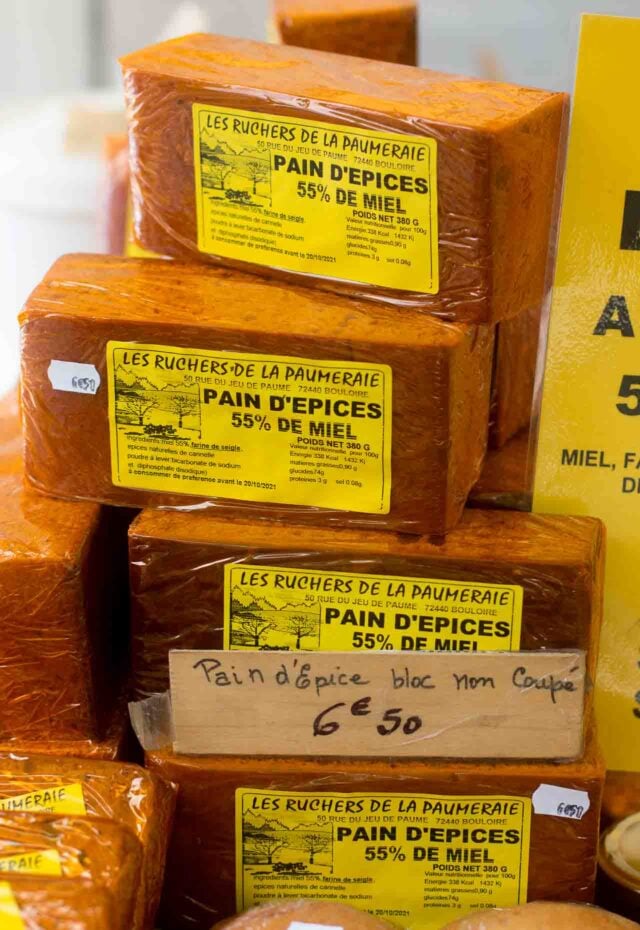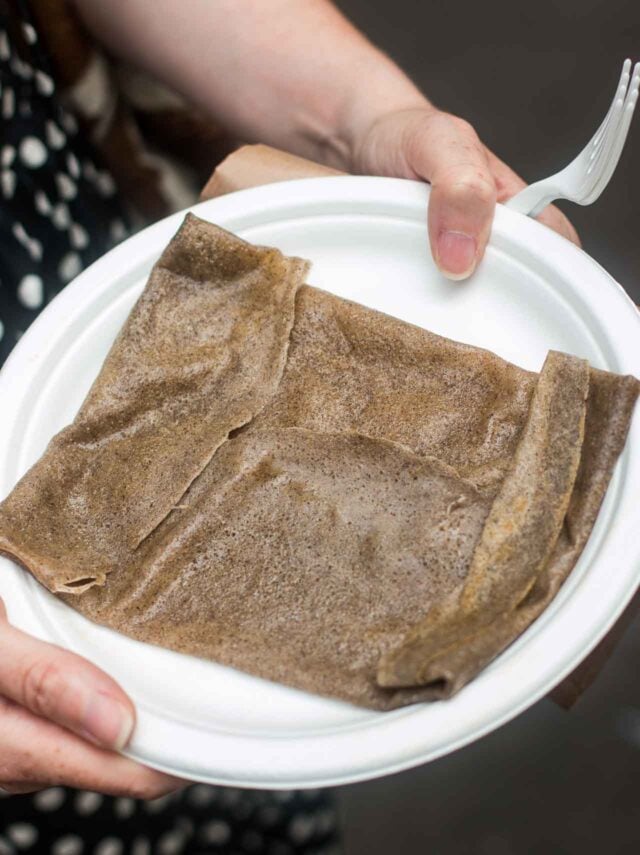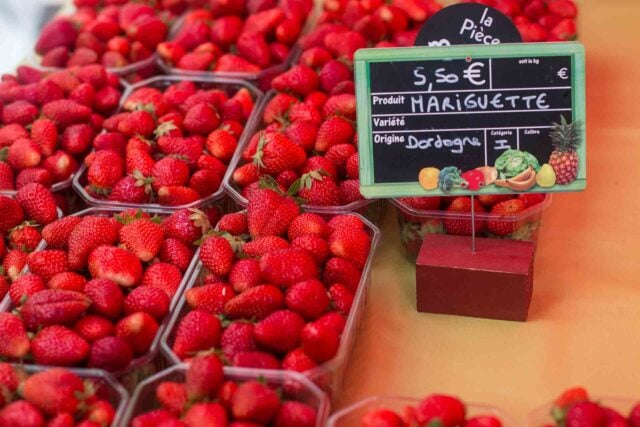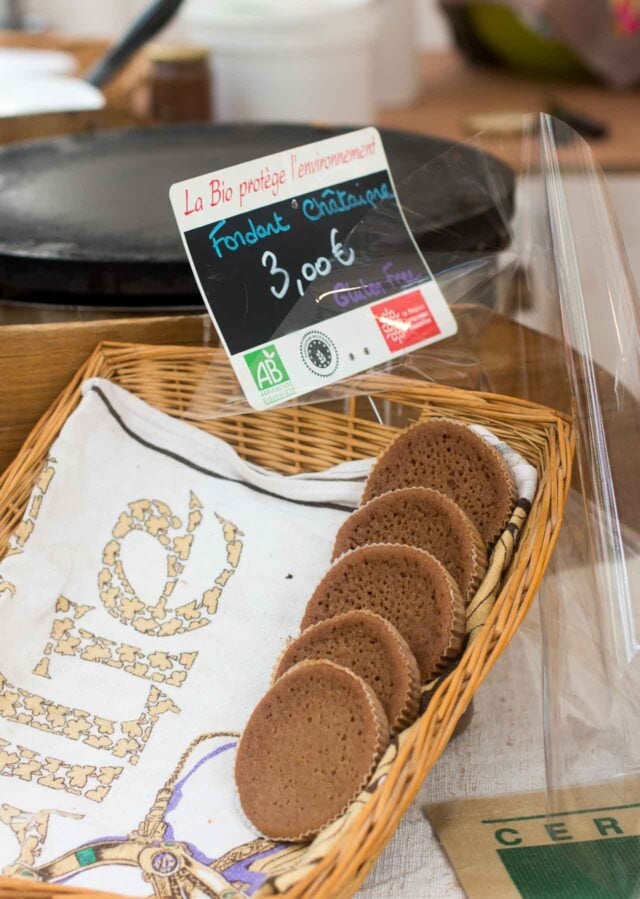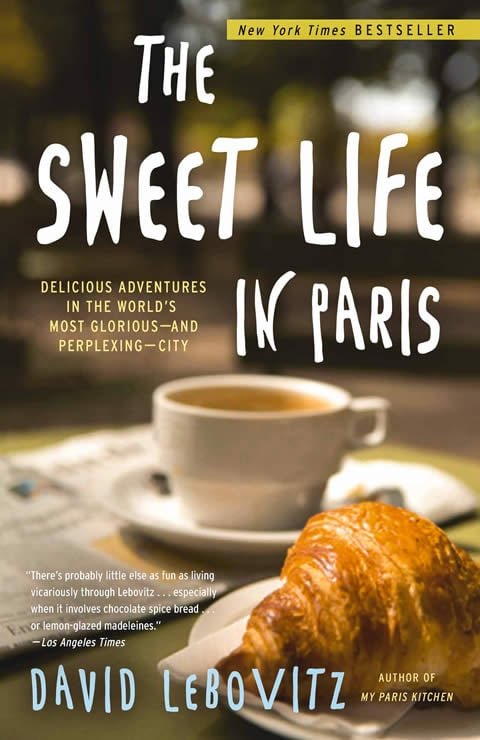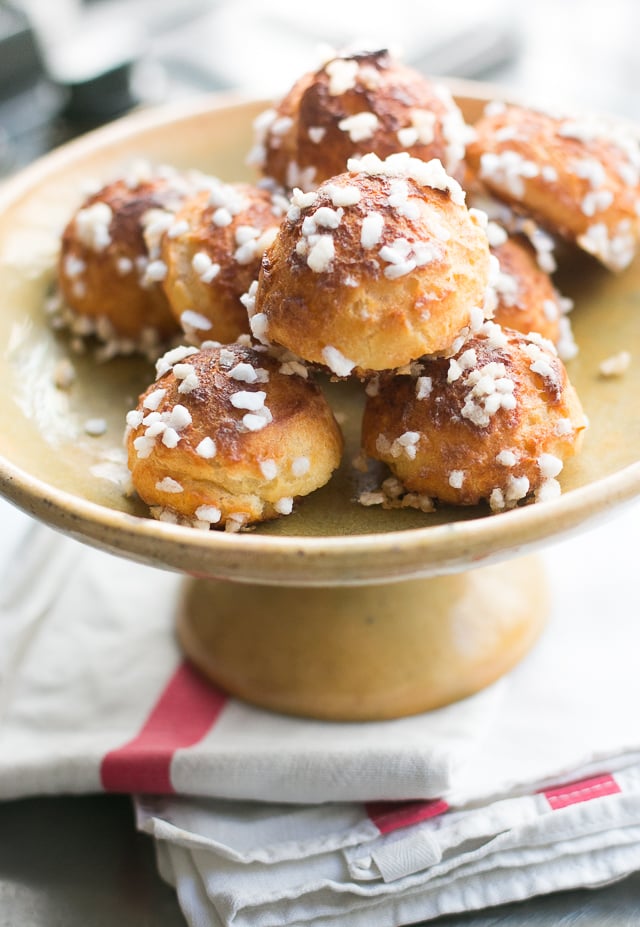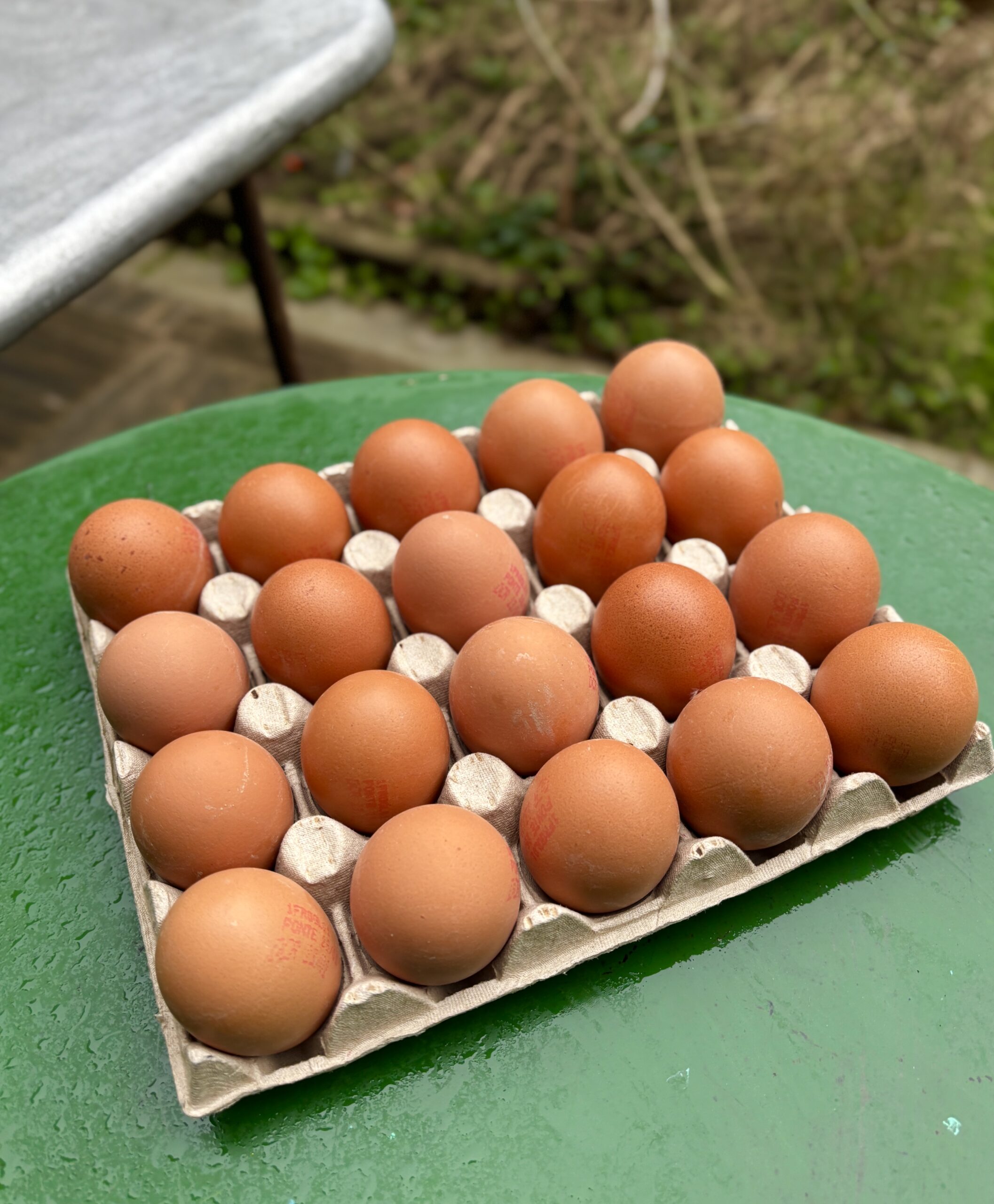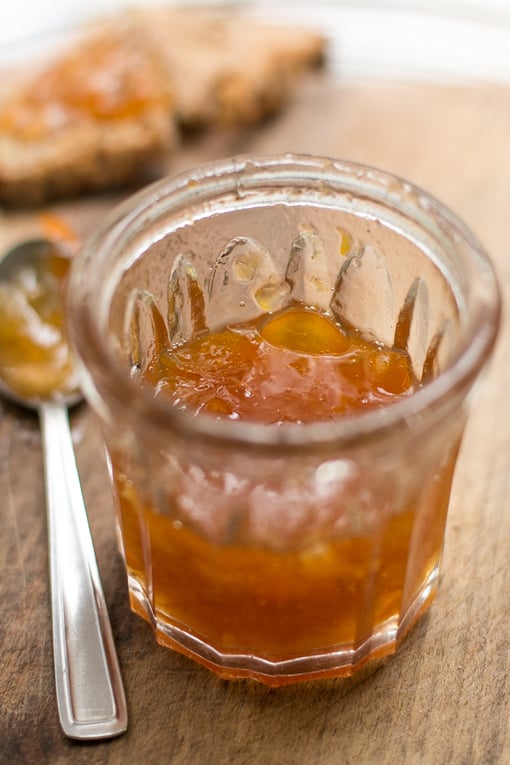Marche des Producteurs de Pays
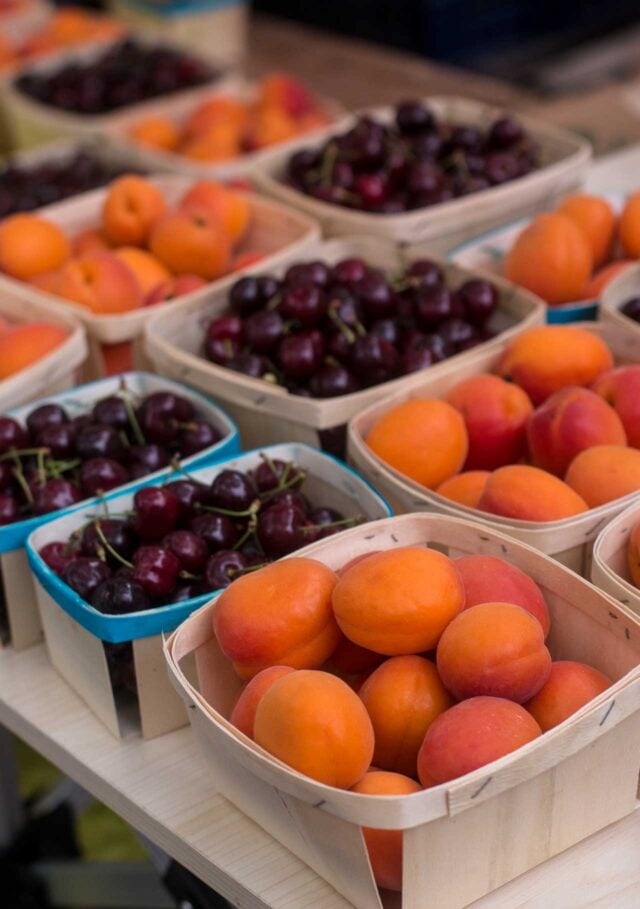
This week France rather quietly announced that visitors from the U.S. and Canada were allowed to come to the country without any restrictions. Things are still moving in the direction of getting back to normal, and while last year is still sort of a haze to me, I believe the markets in Paris remained open the entire time, operating under different conditions. Outdoor markets are extremely important in France and, of course, pre-dated les supermarchés which are now everywhere and have more agreeable hours – some are now even open on Sundays, which was controversial when it happened. But the outdoor markets take place six days a week in Paris, and in a country where holidays and vacations, and Sundays, are sacred, they remain open no matter what, even on Christmas, Easter, and New Year’s Day.
The outdoor markets are an integral part of French life and while in Paris there are over 100 marchés alimentaires (food markets), many of the stands are run by négotiants, or middle-men and women, who get their fruits, vegetables, meats, poultry, and fish from Rungis, the wholesale market outside of the city. There are many small farms in France but many stay, and sell, only in their regions due to their size. So I’m always happy when I see signs posted about an upcoming Marché des Producteurs de Pays, where you can buy things directly from the growers and producers, who bring their foods to the city.
With shopping baskets in tow, I hit the marché last weekend with my friend Jane of La Cuisine. While I couldn’t wait to get to the butter, which we remembered from past visits, we strolled around to see what everyone had before getting down to doing our shopping.
Because it’s a producer’s market, there is a more limited selection of items for sale. There’s some produce, that’s not the entire focus of these roving markets. So if you’re looking to make Salade niçoise and need fava beans, eggs, and tomatoes, or celery root for Céleri Remoulade, you might have to change what’s on the menu chez toi, at your place. On the other hand, there are things to eat while roving the market, including buckwheat galettes, oysters in season, Parmentier (a Shepherd’s Pie that’s made in huge batches on griddles, and popular in France), or a sandwich made on the spot with grilled sausage.
Our first stop was determined by where our noses led us. Which was in the direction of les fromages…
I once got a scolding for taking a picture of some lovely goat cheeses that were on display at this market, that still smarts. So I’ve learned over the years to 1) Always ask first, and 2) Before you ask, take time to appreciate before asking to take a picture. The upside to this approach is not only can you get a nicer shot to share on your blog with your awesome readers, which you always want to do, to put the foods and producers in their best light, but it gives you a chance to get to know the vendors and the makers of what you’re buying.
Not everyone is focused on the shoppers, though. There was a couple at one booth who were showing a lot more interest in getting amorous with each other than what they were selling. Although to be honest, if I looked like that fellow, I’d spend more time searching out amorous exploits than I would trying to sell jars of jam. When I returned the next morning, they were powering down shots of strong, black café express and chain-smoking, looking like they just rolled out of le sac before the market started and didn’t have time for any personal grooming after what was likely was a very charged, but satisfying, evening. I didn’t disturb them that day either.
Much to the chagrin of friends and family (i.e.; Romain), my greatest pleasure in life is being in a horizontal position, and while your mind might be in the gutter hearing that, my mind is always on something else: Butter. These days, that’s where much of satisfaction comes from, specifically salted French butter, which fortunately is a passion that Romain shares with me.
While talking to the cheese vendor, while at the same time discreetly surveying the beautiful cheeses and deciding which ones I wanted to share pictures of with you, the gentleman actually remembered us from last year. Fortunately, it wasn’t the guy who terrorized me for taking a picture, who I did make up with by buying a few rounds of his goat cheeses, which were very delicious and I told him so, which (mostly) resolved the situation, although obvs. I’m still scarred by it.
As this fellow lopped off a slab of salted butter from the big mound he was selling from, I picked out a few goat and sheeps’ milk cheeses that would indeed be coming home with me, along with the butter.
Often when I share pictures of cheese on social media, people ask, “What’s the name of that cheese?”
At markets like this, you don’t usually shop by name, but by the cheese. The name of the Brebimou, shown above, is seemingly a mash-up of brebis (sheep) and mou (soft). So if you ask for a Brebimou elsewhere, they likely won’t know what the heck you’re talking about. So while one can shop for Comté, Roquefort, Cantal, St. Nectaire, and Brie de Meaux by name, from small producers the way to go is to go with what looks good, or to ask and let them know what you’re looking for in a cheese; soft, firm, semi-dry, moist, forte or pas trop forte (stong or not-too strong), goat or sheeps’ milk, and perhaps whether you plan to eat the cheese that day or later on.
You can really get some of the best cheeses in France if you have access to a small producer, as their cheeses are made in limited quantities in small batches, and they personally nurture them along until they’re ripe and ready. (Although the big-name cheeses like Comté, Beaufort, and Brie de Meaux are also made by hand, but just in larger batches since they’re feeding a larger audience.) Another bonus is the small-scale cheeses are sold at reasonable prices. Last summer at the market in Olonzac, in the south of France, a man was selling dewy little goat cheeses that he’d just made from his wooden cart for €2-3 each. Yes, I stocked up. And boy, were those good – at any price.
And speaking of knowing where the food comes from, the cheesemaker also had veal for sale, with a sign on it: “Veal raised on the prairie (meadow) under its mother” which was good intel if you were planning to buy veal.
We also perused the olive stand, while a woman hovering behind me seemed attracted by my fancy DSLR camera…and probably the wallet in my shoulder bag. She appeared to be shopping, and browsing, but wasn’t buying anything and didn’t have a market bag with her. So it seems like the vendors aren’t the only ones to be back in business. So just a head’s up that when you’re out and about to keep an eye on your things. I stared her down until she left, and alerted the vendeuse at the stand, who was equally vexed. No need to be paranoid but I’m alert, especially when I pull out my camera as it’s pretty much a calling card for any bad apples hovering in the vicinity.
But there were no bad olives at the stand selling olives from Nyons, which are some of my favorites types of olives. The kindly matriarch from this 4-generational farm gave us tastes and we each bought a bag. I didn’t buy any organic olive oil, since I get mine from a family in Sicily (who can only ship within Europe) but olive oil from Nyons is usually excellent.
Another regional French specialty is Pain d’épices. Made with honey, it’s the French equivalent of gingerbread, with a mix of spices that has remarkable staying power. This one boasts 55% honey and the package says it’ll keep until next October. I bought a mini-pack of three slices for €2,5 for an upcoming train trip, and I hope it lasts long enough in my apartment until we take the trip!
Another yet regional specialty are galettes from Brittany, made with buckwheat, which are sometimes mistakenly called “buckwheat crêpes” by visitors, which confuses locals since galettes are made with buckwheat flour and crêpes are made with white flour. Although in some parts of Brittany, buckwheat galettes are called “crêpes au blé noir.” (“Dark flour.”)
Confused? Don’t worry about it. Just follow the signs and order what sounds and looks good to you. To be honest, these galettes (below) didn’t look all that spectacular, so we just ordered a galette beurre for the fun of it to share, which simply had a swipe of salted butter smeared inside, but wow, was that good! So much so that I bought a pack of 6 galettes nature (plain) for Romain…who, if I didn’t put the brakes on, would eat them all in one go. Jane said the same thing about her #frenchman
Even though the same stand was selling freshly milled buckwheat flour (farine de sarrasin), and I could make my own, I’ve got my hands full of projects and was happy to support the galette-makers, who make me happy. And when I make them at home, Romain tends to gobble them down as soon as they’re warm off the griddle and it’s hard to keep up. #happyfrenchman
One thing I like to pick up at these markets is cold-pressed oils. While I have my olive oil source down, these oils are good for cooking, although people use them for making vinaigrettes in France, often in place of olive oil as some people find the flavor of olive oil a bit “trop” (too much.) There’s a lot of back-and-forth about what oil is good for you and what isn’t. I’m generally of the mind that the more natural, the better. And since I’ve seen everything from eggs to butter demonized over the years, my take is that people have been eating foods closest to the earth for a very long time, so I tend to focus on less-processed things, rather than the information that seems to change from year to year about which oil you should be eating or whatever. And I’ve done my best to remove the word “should” from my vocabulary, and have a filter on my computer that filters out “You should…” messages from arriving into my Inbox.
(A reader also noted a few years ago during a brouhaha about an ingredient in a recipe on my blog, “Probably the stress of worrying about it all the time is worse for you than actually eating it.” I forget who that was, but when I return to using the word “should,” I should find her and give her an honorable mention certificate.)
Jane and I were initially excited when we arrived at the market to see a grouping of tables and chairs all set up for lunch adjacent to the market. We both had the same thought: What a great idea to have a little restaurant attached to the market! But the tables and chairs were for a local pizzeria, and there were a few high tables here and there (sans chairs) for the few stands that were offering up something to eat because…it’s France, and it’s everybody’s favorite activity. But there were only about two or three tables, which aren’t very large, so you have to not mind sharing one.
Meat is popular, especially out in the countryside. But at street fairs and so forth in Paris, there are invariably sausages grilling up that even city folks can’t resist. Several hipsters were wolfing down grilled sausage sandwiches while the sandwich maker was working on a lamb brochette sandwich for an older gentleman who was waiting patiently while the fellow assembled his lunch.
To reiterate the point, producer’s markets are usually very good places to get meat and poultry because the producers themselves are selling them, hence the sign below that notes La Ferme de Mayrinhac, below, the farm where the animals are raised, not a random butcher, so you know where the meat is coming from and you can talk to the folks about how they raise their it, and they often have bucolic pictures of where they do it too. Of course, there may also be a bit of cinéma, or a gauzy appearance of things from the pastoral images, but generally speaking, I’ve found that the people standing behind counters selling their own products have an admirable sense of pride about what they sell and are happy to talk to you about it. As long as you ask before taking any pictures, that is.

But last summer at the market in Olonzac, I discovered Mariguettes grown by a woman who is a potagère (gardener), that she and her charming daughter were selling, amongst their other eye-poppingly beautiful fruits and vegetables. Mariguettes a newer variety that’s a cross between Gariguettes and Mara des Bois and I’ve tasted some great strawberries in Northern California and in Plougastel, Brittany, but those were right up there with the best of the best. The impressive berry stand at this Marché des Producteurs in Paris was also selling small baskets of blackcurrants, raspberries, and gooseberries, not in quantities (or prices) that would let you make a standard-size dessert from, but enough to make a nice compote to go on your yogurt or running over a dish of ice cream.
(When I was writing Drinking French, a friend gave me her mother’s recipe for blackcurrant liqueur. It called for 2 kilos, or 4 1/2 pounds, of blackcurrants, which I was sure few could tackle. You’re welcome.)
A few years back I wrote a post about Crème de Marrons, the delectable French chestnut spread that’s sold in tins and tubes. It racked up 127 comments which is a tribute to its popularity (or my fawning over it…it’s very popular in France for a reason.) One stand had organic chestnut flour fondants, above, an all-purpose word for soft cakes that fond dans la bouche, or melt in your mouth. They also had a lot of different types of chestnut confiture or “jam.” It’s a little different than the tinned crème de Marrons, which has candied chestnuts blended into it.
These homespun confitures tend to be more rustic, and less sweet. And for the low-sugar people (who are trying to put me out of business!) you can sometimes find low-sugar (allégée) varieties, too. But I did buy a jar of allégée myself, so if I was seeing a psychaitre, they’d tell me that I was engaging in self-destructive behavior.
Because…it’s France, there are invariably a few booths selling wine, and at least one selling Champagne. This market also had a brewer, since beer is quickly catching up to wine in terms of sales in France. In my neighborhood, however, a quick glance at café tables on any given afternoon would seem that beer has surpassed it. And when a neighbor invited us for dinner the other night, he only had beer.
We didn’t stop for a glass of beer as we were heading to the corner café for a glass of rosé, but since the producteurs at these markets come from the countryside, they’re very good at producing conserved foods that you can bring home and save for a later date. I admire DIYers and I make my own cassoulet when the mood hits, but there’s no shame in buying a well-made cassoulet or confit de canard in a jar. Before the recent advent of food delivery services, which mostly feature burgers, pizza and les sushis, these were French versions of foods “to go.”
Most aren’t exactly summertime dishes, and you’ll find things like choucroute (cuts of cured pork, served with sauerkraut) in jars, as well as cassoulet (below, middle), civet of duck with prunes (thickened with duck blood), and other interesting things to keep in your pantry until you’ve got a hankering.
The next morning I was up early and decided to go back and get some nice cherries but they were completely sold out. All they had were dinged up cerises à cuir (cooking cherries) and I was dismayed that all the nice baskets of cherries were gone and left. Halfway home, however, I turned around, and ran back to buy the rest of the cherries they did have, as well as a basket of those marvelous Mariguette strawberries, just for good measure. As they say, when life gives you cooking cherries…buy ’em. Which I did.
The Marchés des Producteurs de Pays take place several times a year in Paris, and in other cities in France. The next market in Paris is planned for July 10 and 11, at 33 blvd de Reuilly in the 12th arrondissement. You can search for others on their website and they’re announced on their Facebook page.
Another organization that runs Producer’s Markets is Pari Fermier. They are also on Facebook.
__________________________________
Other things to look out for at the Marchés des Producteurs de Pays are Pruneaux d’Agen, the wonderful prunes from Agen. Mi-cuit (partially-dried) prunes are the best, most luscious, although they don’t last very long and should be refrigerated, although some are well-sealed so they can travel. Just ask the vendor which are the best for your situation. When in season, there is usually an oyster stand that’s a worthwhile stop. This year due to pandemic restrictions this winter you couldn’t eat the oysters at the market (but they were happy to open them for you if you wanted to take them home), nor could you have a little plastic cup of cold white Muscadet wine with them. But next oyster season, they’ll likely be back in business.
French honey is another treat that’s sold at these markets. I didn’t buy any this time because I’ve got a half-dozen jars in my cabinet, but if you like bitter honey (as I do), chestnut honey in France is wonderful and much more affordable than it is in the U.S. In France honey is considered a delicacy and is sold by variety and they have jars open to taste with disposable utensils. One rarely finds buckwheat honey in France nowadays, for some reason, so when I do find jars of dark miel de sarrasin, I snatch up a few.






